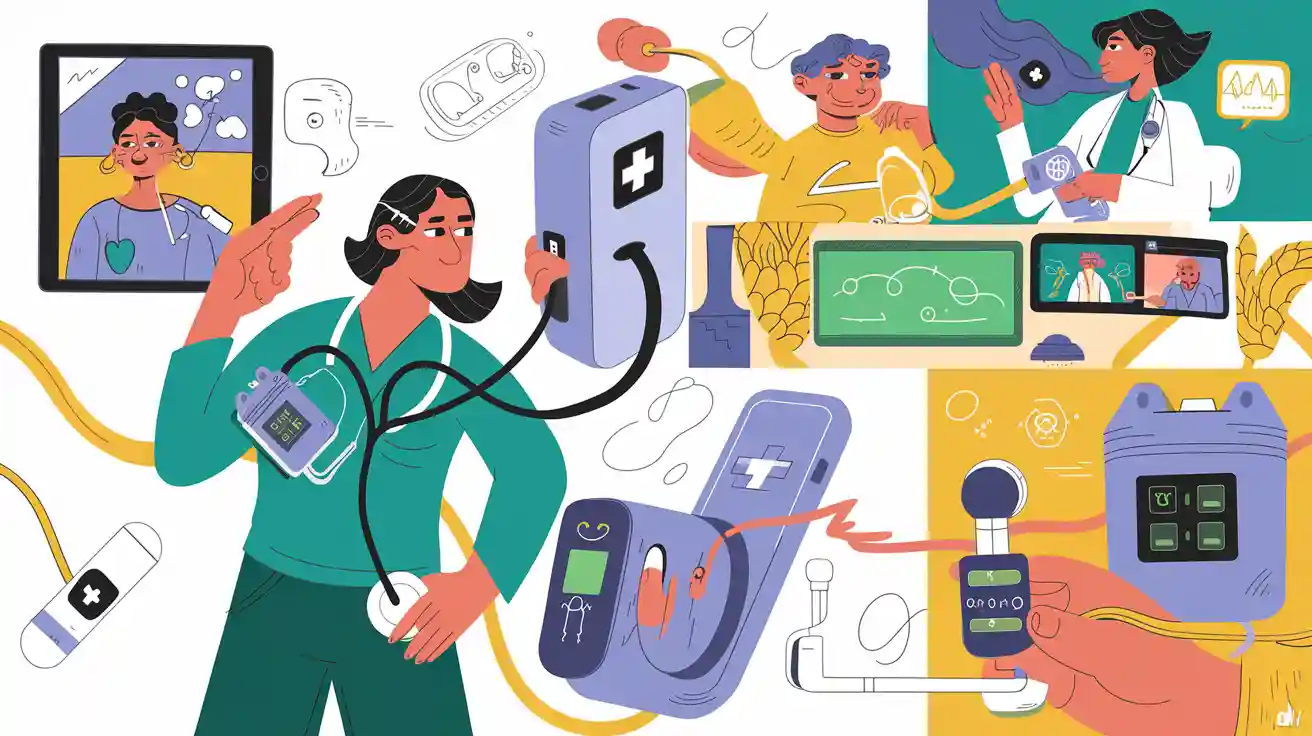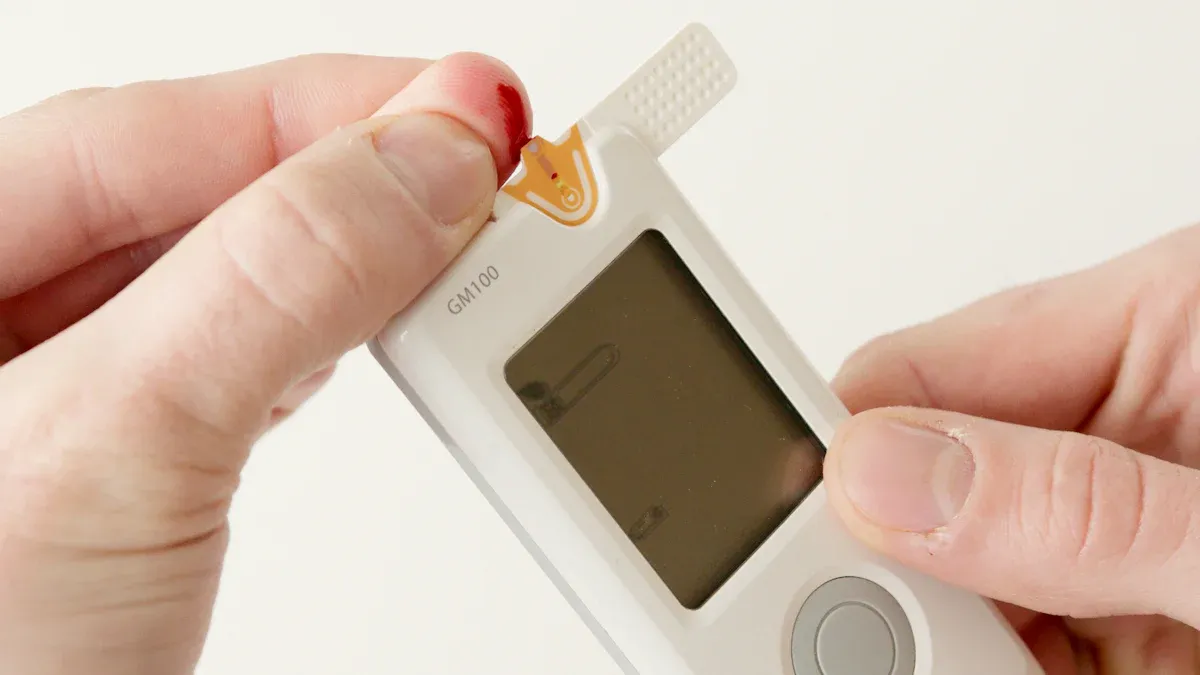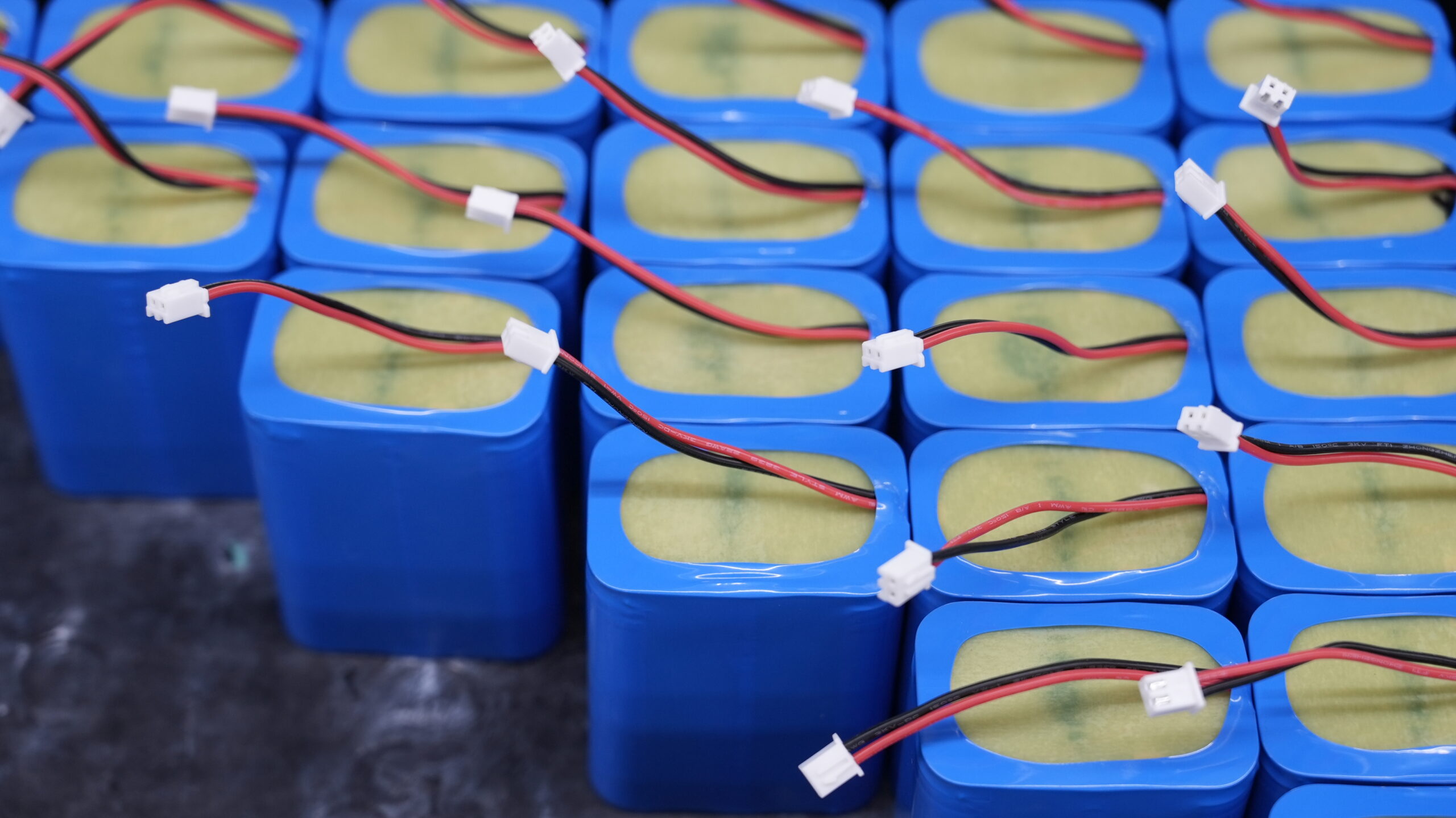
You depend on advanced battery solutions to power remote healthcare and telemedicine devices. Lithium battery technology forms the backbone of modern medical equipment, supporting critical applications with unmatched reliability and safety. As healthcare expands beyond traditional settings, you require batteries that deliver portability and longevity without compromise.
The demand for healthcare battery solutions continues to rise due to:
A significant increase in chronic diseases worldwide.
Rapid advancements in battery technology.
The growing need for wearable and implantable medical devices.
Reliable batteries ensure uninterrupted patient care, while effective battery optimization and management systems maximize performance and safety.
Key Takeaways
Reliable batteries are essential for uninterrupted patient care in remote healthcare. Choose high-capacity batteries to ensure consistent performance.
Portability is key for medical devices. Opt for lightweight lithium batteries to enhance comfort and usability for patients.
Safety standards are crucial for battery use in healthcare. Ensure compliance with regulations to protect patients and staff from potential hazards.
Long-lasting batteries reduce maintenance needs. Implement battery optimization techniques to extend battery life and minimize downtime.
Advanced battery management systems enhance safety and efficiency. Use these systems to monitor battery health and prevent failures.
Part 1: Healthcare Device Battery Needs

1.1 Reliability
You rely on batteries in medical equipment to deliver consistent performance. In remote healthcare, reliability becomes critical. If a battery fails, your devices may malfunction, causing data loss and risking patient safety. Reliable healthcare battery solutions prevent downtime and protect patient data integrity.
High power capacity supports continuous operation.
Small size allows integration into handheld and wearable health monitors.
Consistent performance ensures uninterrupted care.
Battery failures can result in equipment malfunction, leading to data loss from device memory. This loss of data can severely impact the effectiveness of remote monitoring systems, ultimately affecting patient outcomes in telemedicine.
1.2 Portability
You need batteries that keep portable medical devices lightweight and easy to transport. Lithium battery technology offers high energy density, making it ideal for devices that must operate for long periods without adding bulk.
Lithium-ion batteries provide up to 250 Wh/kg energy density.
Older technologies like NiMH average around 100 Wh/kg.
High energy density supports portable diagnostic tools and wearables.
Batteries in medical equipment must remain compact to ensure patient comfort and device usability. Healthcare battery solutions designed for portability help you deliver care wherever it is needed.
1.3 Safety
Safety standards for batteries in medical equipment protect both patients and healthcare professionals. You must ensure compliance with international and regional regulations.
Standard | Application |
|---|---|
IEC 60601-1 | Devices with rechargeable batteries |
IEC 62133 | Rechargeable batteries compliance |
IEC 60086-4 | Non-rechargeable lithium batteries |
UL 1642/2054 | Devices sold in North America |
Common safety concerns include fires, leaks, fumes, and blasts. Proper battery solutions minimize these risks, ensuring safe operation in hospitals and other healthcare environments.
1.4 Longevity
Long-lasting batteries in medical equipment reduce maintenance needs and support continuous patient monitoring. Battery optimization techniques can extend battery lifetime by up to 192%. For example, pacemaker batteries last about 71.1 months with remote monitoring and 60.4 months without it.
Battery longevity affects maintenance schedules.
Regular inspections and cleaning help maintain optimal performance.
Following manufacturer guidelines extends battery life and reduces downtime.
You benefit from healthcare battery solutions that maximize longevity, reduce costs, and support reliable medicine delivery.
Part 2: Battery Solutions and Technologies

2.1 Lithium Battery Technology
You depend on lithium battery technology for most remote healthcare and telemedicine applications. Lithium batteries deliver high energy density, lightweight design, and long cycle life, making them the preferred choice for batteries in medical equipment. These batteries support portable diagnostics, wearable monitors, and implantable devices, ensuring reliability and safety in critical healthcare environments.
Lithium battery technology includes several chemistries, each with unique strengths. You can select the optimal chemistry based on your device’s requirements for energy density, cycle life, and safety. The table below compares the most common lithium chemistries used in healthcare battery solutions and other sectors:
Chemistry | Platform Voltage (V) | Energy Density (Wh/kg) | Cycle Life (cycles) | Safety Level | Typical Applications |
|---|---|---|---|---|---|
LCO | 3.7 | 150–200 | 500–1,000 | Moderate | Medical, consumer electronics, portable diagnostics |
NMC | 3.7 | 180–220 | 1,000–2,000 | High | Medical, robotics, security systems, industrial, infrastructure |
LiFePO4 | 3.2 | 90–140 | 2,000–5,000 | Very High | Medical, hospitals, industrial, infrastructure, security systems |
LMO | 3.7 | 100–150 | 700–1,500 | High | Medical, consumer electronics, portable diagnostics, security systems |
LTO | 2.4 | 60–110 | 5,000–20,000 | Excellent | Medical, industrial, infrastructure, robotics |
Solid-State | 3.7–4.2 | 250–350 | 1,000–10,000 | Superior | Medical, robotics, security, infrastructure, emerging medicine applications |
Lithium Metal | 3.4–3.6 | 350–500 | 500–1,000 | Moderate | Medical, high-end diagnostics, research, aerospace |
Note: For more details on lithium battery chemistries, see Nature’s review on lithium-ion batteries.
You gain flexibility by choosing the right lithium battery technology for your application. For example, LiFePO4 batteries offer excellent safety and long cycle life, making them ideal for hospitals and critical medical devices. NMC batteries provide high energy density and reliability, supporting advanced telemedicine and portable diagnostics.
2.2 Lead-Acid and Disposable Batteries
You may still encounter lead-acid and disposable batteries in some healthcare battery solutions. Lead-acid batteries offer reliable backup power for uninterruptible power supply (UPS) systems in hospitals and infrastructure. These batteries in medical equipment provide cost-effective solutions for stationary devices, but their low energy density and heavy weight limit their use in portable diagnostics.
Disposable batteries, such as alkaline and primary lithium cells, power single-use or low-drain medical devices. You often use these batteries in emergency kits, diagnostic tools, and some implantable medicine delivery systems. However, you must consider the environmental impact and limited lifespan of disposable batteries when selecting battery solutions for healthcare.
2.3 Energy Harvesting Devices
You can extend the operational time of wearable medical devices by integrating energy harvesting technology. These devices capture ambient energy from sources such as body heat, movement, light, and radio frequency (RF) signals. By using energy harvesting, you reduce reliance on external power sources and improve the sustainability of batteries in medical equipment.
Recent studies highlight the effectiveness of multi-source energy harvesting techniques. These methods combine light, RF, vibrations, and temperature differentials to optimize power management and enhance operational longevity. You benefit from longer device uptime and reduced maintenance, which is critical for remote healthcare and continuous patient monitoring.
Energy harvesting supports sustainable healthcare battery solutions by enhancing device lifespan and performance. This technology is especially valuable for wearable and implantable devices that require uninterrupted operation.
2.4 Battery Management Systems
You must implement advanced battery management systems (BMS) to ensure the safety, efficiency, and longevity of batteries in medical equipment. A BMS continuously monitors voltage, current, temperature, and state of charge (SOC) to maintain optimal battery conditions. This system protects against overcharging, deep discharging, and hazardous situations, which can lead to battery failure.
A robust BMS provides several key functions:
Monitoring: Tracks voltage, current, temperature, and SOC for safe operation.
Protection: Prevents overcharging, deep discharging, and overheating.
Balancing: Maintains uniform SOC among cells to extend battery life.
Reporting: Delivers real-time battery status to users and connected systems.
Battery management systems play a critical role in preventing failures by proactively managing battery health. You ensure reliable operation of healthcare battery solutions, reduce downtime, and comply with safety standards. For more information on BMS and their integration in healthcare, visit BMS and PCM Solutions.
Battery management systems are essential for healthcare, robotics, security, and industrial sectors. They help you maintain the reliability and performance of lithium battery technology in demanding environments.
Part 3: Selecting Battery Solutions for Medical Devices
3.1 Device Requirements
You must match batteries in medical equipment to the specific needs of your devices. Each application, whether in medicine, robotics, security systems, infrastructure, or industrial sectors, demands unique battery characteristics. For example, portable monitors in hospitals require lithium batteries with high energy density and long cycle life. Wearable healthcare devices need lightweight batteries for patient comfort. The table below compares lithium-ion and NiMH batteries, helping you select the right solution for your devices:
Criteria | Lithium-Ion Batteries | NiMH Batteries |
|---|---|---|
Energy Density | Up to 250 Wh/kg | Around 100 Wh/kg |
Weight | 30% lighter | Heavier |
Charge Cycles | Over 500 cycles | Fewer cycles |
Capacity Retention | 80% after 500 cycles | Not specified |
You must also consider regulatory standards. Batteries in medical equipment must comply with ANSI/AAMI ES 60601-1, IEC 60086-4, UL2054, and ISO 20127. These standards ensure reliability and safety for healthcare applications.
3.2 Environment and Usage
You need to evaluate the environment where your devices operate. Batteries in medical equipment face challenges such as temperature extremes, humidity, and exposure to contaminants. Environmental factors like resource consumption and battery disposal impact sustainability. For sustainable battery solutions, review our approach to sustainability.
Usage patterns also affect battery degradation. For telemedicine devices, choosing power-efficient applications can extend battery life. For example, FaceTime on iOS can increase call times by 126%, while Telegram on Android extends them by 25%. Higher network bitrates drain batteries faster, especially on Android devices. You must select batteries and technology that support your usage needs and maintain reliability.
Environmental Factor | Impact Description |
|---|---|
Production of CGM devices | Substantial carbon footprint due to resource consumption and waste generation. |
Resource consumption | Lithium mining depletes local water levels by 65%. |
Battery disposal | Incineration releases harmful gases; landfill disposal risks groundwater contamination. |
Lifecycle of batteries | Each stage poses environmental risks, including heavy metal leaching. |
3.3 Cost and Supply Chain
You must balance performance and cost when selecting batteries in medical equipment. Lithium batteries offer cost-effective solutions with high energy density, but advanced options like solid-state batteries increase project budgets. Potting technology can improve performance but raises costs, requiring careful analysis.
Supply chain disruptions affect battery availability for healthcare devices. Material shortages, increased shipping costs, and production delays can impact your operations. The COVID-19 pandemic highlighted these risks, making supply chain management essential. For responsible sourcing, review the conflict minerals statement.
Medical device applications have unique battery needs that influence design and costs.
Compliance with international standards involves significant expenses for testing and certification.
Lithium batteries remain favored for their reliability and cost-effectiveness in healthcare and other sectors.
You must consider device requirements, environment, usage, cost, and supply chain factors to select the best batteries in medical equipment. The global demand for reliable battery solutions in healthcare continues to grow, driving innovation in lithium battery technology.
Part 4: Battery Management in Healthcare
4.1 Monitoring and Maintenance
You must monitor batteries in medical equipment to ensure reliable operation in healthcare settings. Regular quality checks, including capacity assessments, help you identify aging batteries before failure occurs. Smart battery systems provide accurate state-of-charge readings and enable remote performance checks. These systems use advanced algorithms to predict charging and discharging times, which supports uninterrupted medicine delivery.
Conduct periodic deep discharges and calibrations to maintain battery accuracy.
Use advanced diagnostics, such as electrochemical impedance spectroscopy, to detect faults and assess capacity.
Educate staff about battery aging and replacement policies.
Routine maintenance extends the lifespan of lithium battery technology. Preventive actions, like testing and calibration, correct issues early and reduce replacement costs. You maintain higher peak performance for longer periods, which benefits hospitals and other critical environments.
4.2 Safe Handling
Safe handling of batteries in medical equipment protects both staff and patients. You should never dispose of lithium batteries in the trash or mix them in piles. Always follow waste and recycling guidelines for fabricated batteries. Recycle spent batteries at designated locations. For non-lithium batteries, dispose of them as universal waste and tape terminals if they exceed 9V.
Disinfect rechargeable batteries with alcohol-based wipes before disposal.
Avoid soap and water to prevent short circuits.
Wear gloves during handling to ensure safety.
Contact environmental health and safety teams for leaking or damaged batteries.
Proper handling reduces risks of fire, leaks, and hazardous exposure, which is essential in healthcare and industrial sectors.
4.3 Optimization Techniques
You can extend battery life in telemedicine devices by adopting several optimization techniques. Use low-power memory technologies, such as LPDDR and eMMC, to reduce energy consumption. Efficient data storage with DRAM and FLASH components also minimizes power use during data retrieval.
Technique | Description |
|---|---|
Low-Power Memory | LPDDR and eMMC components lower energy use while maintaining performance. |
Efficient Data Storage | DRAM and FLASH reduce power during data retrieval. |
Low-Power Sensors | Sensors designed for minimal energy draw. |
Energy Harvesting | Solar, thermal, and kinetic energy harvesting extend battery runtime. |
Wireless Power Transfer | Enables remote charging for continuous device operation. |
Software optimizations, such as enabling low-power sleep modes and optimizing communication protocols, further reduce energy drain. Battery management systems play a vital role in compliance and longevity. They help you meet strict regulatory standards and maintain safe operation. For more on BMS best practices, visit BMS and PCM Solutions.
Effective battery management ensures that lithium battery technology delivers reliable power for healthcare, robotics, security systems, and industrial applications.
You see lithium battery technology leading remote healthcare and telemedicine devices. You improve reliability and safety for patients by choosing industrial lithium batteries, implementing smart battery management systems, and ensuring compliance with safety standards. The table below highlights key steps for healthcare organizations:
Recommendation | Description |
|---|---|
Use Industrial Lithium Batteries | Faster charging, longer life, and built-in safety features for medical use. |
Implement Smart Battery Management | Regulates charging and usage, protects against overheating and overcharging. |
Ensure Compliance with Safety Standards | Avoids risks and meets regulations in critical care areas. |
You drive better outcomes by investing in advanced battery management and optimization.
FAQ
What lithium battery chemistry should you choose for remote healthcare devices?
You should select the chemistry based on your device’s needs. The table below compares key chemistries for medical, robotics, and industrial sectors.
Chemistry | Platform Voltage (V) | Energy Density (Wh/kg) | Cycle Life (cycles) | Safety Level |
|---|---|---|---|---|
LiFePO4 | 3.2 | 90–140 | 2,000–5,000 | Very High |
NMC | 3.7 | 180–220 | 1,000–2,000 | High |
LCO | 3.7 | 150–200 | 500–1,000 | Moderate |
LMO | 3.7 | 100–150 | 700–1,500 | High |
LTO | 2.4 | 60–110 | 5,000–20,000 | Excellent |
How do battery management systems improve safety in telemedicine devices?
You use battery management systems to monitor voltage, current, and temperature. These systems prevent overcharging and overheating. You reduce risks of fire and device failure. BMS ensures compliance with safety standards in medical and industrial applications.
What factors affect lithium battery pack lifespan in healthcare environments?
You extend battery lifespan by controlling temperature, avoiding deep discharges, and following manufacturer guidelines. Regular maintenance and smart charging practices help you achieve longer cycle life. Environmental conditions in hospitals and clinics also impact battery performance.
Can you use lithium battery packs in robotics and security systems for healthcare?
You deploy lithium battery packs in robotics and security systems to support continuous operation. Chemistries like NMC and LiFePO4 offer high energy density and long cycle life. These batteries power autonomous robots, surveillance devices, and infrastructure monitoring tools.
What are the main advantages of LiFePO4 batteries for medical devices?
You benefit from LiFePO4 batteries due to their superior safety, long cycle life, and stable platform voltage. These batteries suit critical medical equipment, hospital infrastructure, and industrial monitoring systems. You minimize maintenance and maximize reliability in demanding healthcare settings.




